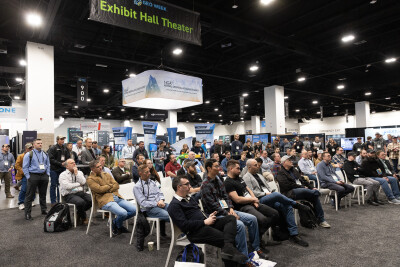Like millions of people, last week I saw Avatar in full IMAX 3D – we did our part to plump up the world wide receipts to over a $ billion. I loved the film and the complete immersion in 3D. So did all of my children. Arthur C. Clarke got it right when he said that any good technology is indistinguishable from magic; this was a magic lantern like none other I’d seen before.
Now that I’ve gushed, what can we in the 3D business learn from this?
Lesson 1: Innovation comes unexpectedly and often from outside our immediate industry. The math, physics and coding underlying Avatar is very sophisticated. The 3D problem includes but goes way beyond geometry capture. One reason we have the patience to sit through 162 minutes of watching ten-foot tall blue aliens swish their tails is that the movie’s makers went to the trouble of measuring the surface reflectance properties and microgeometry of the actors and baked that information into the animation process. Think this is for the movies only? Think again. Surface corrosion information, fit, finish and architectural detail, perhaps better feature recognition is going to devolve from these capabilities. Creators of really convincing simulations, the kind you might use to train new operators of nuclear power plants, offshore production and manufacturing facilities not to mention security planners ought to take good notes about what’s going on in Hollywood’s post-production labs.
Lesson 2: 3D changes the rules. Not just for the entertainment industry but for architecture, engineering, construction, asset management, law enforcement, security planning, historic preservation and on and on. You don’t buy that? Join the club of technology prognosticators and procrastinators who are famous for being dead wrong — “Who the hell wants to hear actors talk?” H.M. Warner, Warner Bros., 1927. Movie theaters that have been losing market share first to Blockbuster and then Netflix have a lifeline with 3D. If you have a traditional survey business or you have a small army of 2D designers on the payroll and you hope things will stay the same, pay very close attention. Unless you’re either on the endangered species list or you work for a protected monopoly, you need to rethink your 3D technology strategy.
Lesson 3: Great 3D can give you vertigo — it’s impossible to get 3D without seeing it first-hand. Writing about 3D is like dancing about architecture, to appropriate a line from Elvis Costello. (Could have been Frank Zappa, Thelonius Monk or Laurie Anderson, I know). You just don’t really get it until you see it for yourself. Ten-foot tall, blue skinny aliens with tails — for grownups? Take this away then: if we need to convince senior management of the value of 3D scanning, they’ve got to see it first-hand. Leica’s TruView and Z+F’s NetView are an important step in this direction of course. Perhaps the best thing that could happen to the 3D laser scanning industry is for senior executives who are responsible for capital investments in industrial plant assets to see Avatar and start thinking about how they can make 3D work for them.
You know it’s coming — now here’s the pitch.
I know that no supervisor in industry is going to pay you to sit through Avatar, or go to an Avatar conference. You’re on your own for that. However, if it is your job to stay on top of 3D, you need to get to SPAR 2010, February 8-10 in Houston. One of our keynote presenters, Paul Debevec from UC Davis invented some scanning methods used on Avatar and the Incredible Case of Benjamin Button before that. He’s also credited with pioneering work on high dynamic range photography. Check out this treasure on youtube to see what this is all about. Look for Quantapoint founder Eric Hoffman’s credit on the Parthenon piece. We asked Debevec to give this keynote to get us all thinking about what’s coming next and to get a view into today’s labs at tomorrow’s products.
The thread of new software technologies at SPAR 2010 continues with presentation on new processing tools from Pointools, ClearEdge3D, etc. New kinds of hardware — don’t miss Roger Stetner’s presentation on flash LIDAR — is headed your way too. Holographic displays aren’t movie fantasies anymore; check out Zebra Imaging‘s display technology.





